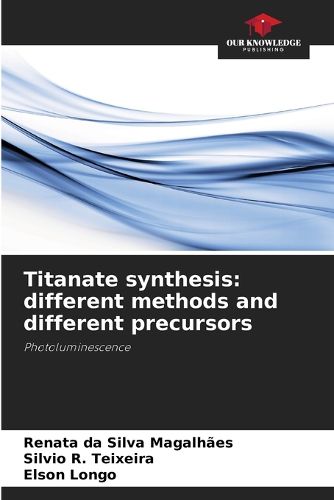Readings Newsletter
Become a Readings Member to make your shopping experience even easier.
Sign in or sign up for free!
You’re not far away from qualifying for FREE standard shipping within Australia
You’ve qualified for FREE standard shipping within Australia
The cart is loading…






Barium (BT) and strontium (ST) titanates were produced using two different methods, Solid State Reaction (SSR), at temperatures of 1150/1200 degreesC, and Microwave-Assisted Hydrothermal (MAH), with different concentrations of the mineralizer KOH (1, 3 and 6 mol/L). Barium/strontium chloride and TiO2 in the anatase phase were used as precursors in the preparation by the SSR method. For the syntheses carried out using the MAH method, the same chlorides were used and, as a titanium precursor, an anatase complex with hydrogen peroxide. In all the preparations, titanates were obtained, but with different results in terms of crystallization and particle morphology, which may be associated with the different concentrations of mineralizer, the type of titanium precursor used, as well as the use of different synthesis strategies. The materials resulting from the two processes were characterized by X-Ray Diffractometry (XRD), Micro-Raman Spectroscopy (MR), Fourier Transform Infrared Spectroscopy (FTIR), UV-Vis, Scanning Electron Microscopy (SEM) and, finally, their photoluminescent emissions (FL) were recorded.
$9.00 standard shipping within Australia
FREE standard shipping within Australia for orders over $100.00
Express & International shipping calculated at checkout
Barium (BT) and strontium (ST) titanates were produced using two different methods, Solid State Reaction (SSR), at temperatures of 1150/1200 degreesC, and Microwave-Assisted Hydrothermal (MAH), with different concentrations of the mineralizer KOH (1, 3 and 6 mol/L). Barium/strontium chloride and TiO2 in the anatase phase were used as precursors in the preparation by the SSR method. For the syntheses carried out using the MAH method, the same chlorides were used and, as a titanium precursor, an anatase complex with hydrogen peroxide. In all the preparations, titanates were obtained, but with different results in terms of crystallization and particle morphology, which may be associated with the different concentrations of mineralizer, the type of titanium precursor used, as well as the use of different synthesis strategies. The materials resulting from the two processes were characterized by X-Ray Diffractometry (XRD), Micro-Raman Spectroscopy (MR), Fourier Transform Infrared Spectroscopy (FTIR), UV-Vis, Scanning Electron Microscopy (SEM) and, finally, their photoluminescent emissions (FL) were recorded.